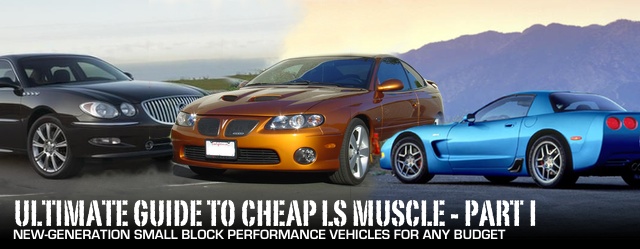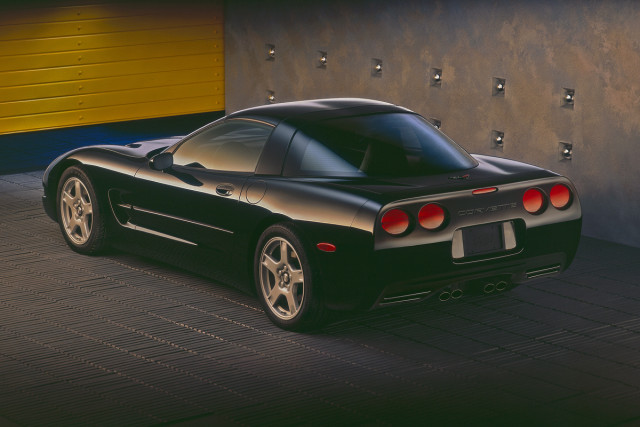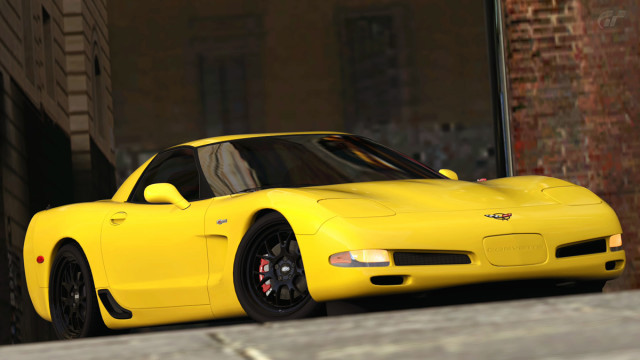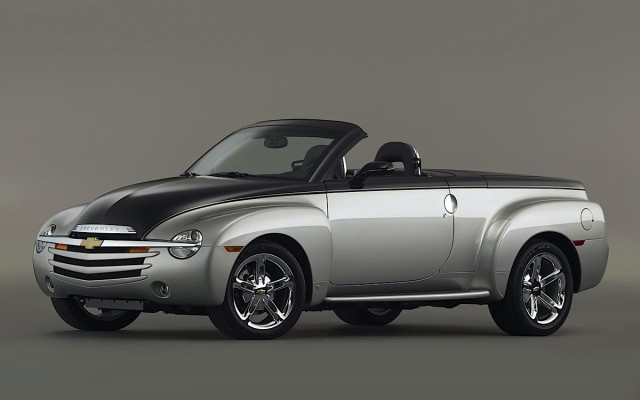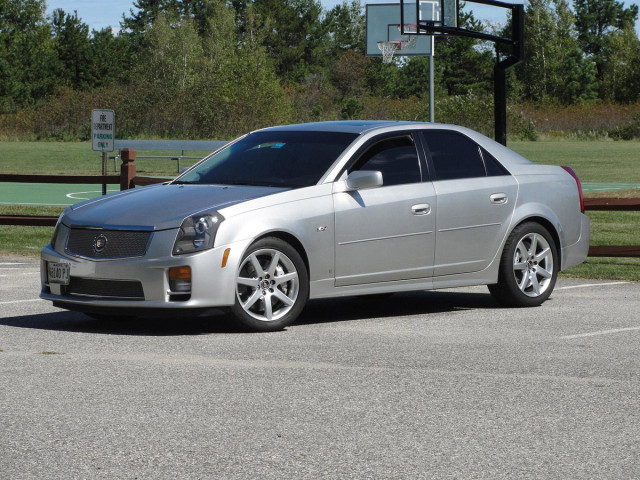Most car magazines offer their readers consumer advice, such as which minivan can haul the most children to soccer practice, or which large, overpriced luxury car can fit the most golf clubs in its trunk. Being an online-based magazine dedicated to the niche LS performance enthusiasts, we tend to steer clear of such useless information.
However, in these dark and difficult times, we realize that not everyone can afford a new Camaro SS, CTS-V, or a Corvette ZR1. So we decided to take a closer look at the used LS-performance vehicle market, and see what kind of deals can be had. We won’t waste your time by discussing the 5.3-liter TrailBlazer or 4.8-liter Silverado, but we will provide you with the information you need to purchase your next LS-powered performance vehicle, whether you’re in the market for a new daily driver or a new weekend warrior. The vehicles we’ll be covering, will be in the $5,000 through $30,000 range, primarily focusing on the Gen III and early Gen IV stuff.
Now before you raise the “BS Flag” and say that “LS” and “affordable” don’t belong in the same sentence together, let me remind you of this – the LS engine, or more precisely, the LS1, is approaching 15 years old this coming year. Crazy, huh? My, how the time has flown by, and there have been plenty of vehicles that have received the LS engines over the years. Let’s kick things off with the car that had started it all, the C5 Corvette, shall we?
Fifth-Generation Corvette – 1997-2004
Released in March of 1997, the new ’97 Corvette received a complete makeover from its previous generation. A new body, a new platform, an updated interior, and of course, the all new, all-aluminum LS1 engine all attributed to revitalizing the Corvette, and brought it into the 21st-century. The suspension was improved, and the transmission was finally relocated to the rear, which provided the new Corvette with better weight distribution and improved handling, making it more like its European rivals.
Initially, the C5 was only offered with a 345hp LS1, and only one body style; the hatchback coupe with a targa roof. The convertible would arrive in mid-year 1998, and would go on to pace the Indy 500 for only the fourth time in its 45 year life span. Both the convertible and coupe version of the Corvette were available with either a four-speed automatic (4L60E), or a six-speed manual (T-56). Automatics made do with either 2.73 or 3.15 rearend gear sets, while manuals were equipped with 3.42’s.

Vettes were available in three distinct body styles: Convertible, targa coupe, and fixed-roof coupe (FRC)
Another model was added for 1999, and its mission statement was pure performance. This performance-oriented model was known as the Fixed Roof Coupe, or FRC for short.
Though it packed the same 345hp LS1 as the rest of the Corvette lineup, it had a lighter, notchback-style roof, chassis bracing from the convertible for added stiffness, and was only available with the T-56 manual transmision and 3.42 gears.
Though Chevrolet suspected it would be popular with the road-racer types, it wasn’t a big hit outside of the competition community. It was a colossal failure in the showroom, and instead of killing it after two slow-sales years, they decided to improve upon it. Enter the Z06.
For 2001, and with assistance from the Corvette Racing team, the engineers at GM decided to take the FRC and turn it into something it should have been in the first place – a full on, track-ready sports car that you could drive on the street. For starters, it came equipped with the 385hp LS6, developing 35 more horsepower than the standard car, which in itself picked up another 5hp thanks to the LS6 intake that all LS1-powered cars had from 2001 on. It also came to the party with an improved “Active Handling” suspension, wider wheels with grippier tires, a lighter and less restrictive exhaust system, brake cooling ducts, thinner glass, and special badging to let everyone know that you weren’t in a normal Corvette.
A year later, the Z06 managed to gain another 20hp by way of a larger camshaft, new intake valves, and improved fuel mapping. After that, the entire C5 lineup basically remained unchanged through the end of its production run in 2004, though a Commemorative Edition Z06 had a carbon fiber hood, along with special paint and graphics for the final year.
The C5 Z06 was one of the first GM cars to have its ride, handling, and brakes dialed in at the famed Nurburgring race track in Germany, setting a record lap time of under 8 minutes. Quarter mile performance for the base C5’s were in the mid-to-low 13 second range, while the Z06 was a mid-to-low 12-second car.
With all of the hoopla surrounding the C6 Corvettes these days, the fifth-generation Corvettes are being sold at bargain prices. First year C5’s can be picked up for under $10k, while 2004 versions of the targa-roof coupe tend to go for the high-teens to low-twenties.
Fixed Roof Coupes can be had for as little as $10k, while ’01 through ’04 Z06’s can bring as much as $21k. But, you can score an ’01 with some miles on the clock for as little as $15k. If you’re intent on feeling the wind through your hair, grab a ’98 convertible for the insanely-low price of $11k.
Fourth-Generation Camaro/Firebird – 1998-2002
In 1998, a year after the C5 Corvette’s introduction, the fourth-generation F-bodies received a face lift and a new heart transplant in the form of the LS1. While the cosmetic makeover was welcomed, the LS1 engine – at least initially, wasn’t. For new owners who had previously owned an LT1 car, the factory rated 305hp (320hp with ram-air) seemed a little light. But that was due to its unique power curve, and while the LT1 cars were quicker off of the line thanks to their low-end torque, the LS1 cars would blow past them by the end of second gear, ultimately resulting in 1/4-mile times anywhere from a half-second to a full-second faster than their older sisters, depending on the exact model.
Like the Corvette, the F-body cars received the T-56 and the 4L60E for shifting duties, and the final drive gearing was 3.42 for the manual, while the automatics received the 2.73 gears in base V8 cars. But, 3.23’s were an optional “performance-axle ratio”. The Ram-Air automatic Camaros and ‘Birds had the 3.23 gears automatically (pun intended).
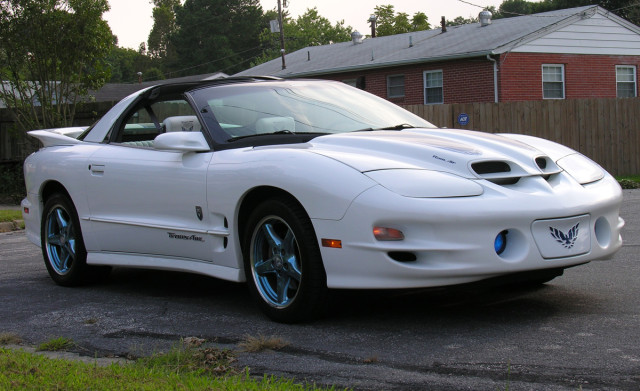
Steer clear of the “special edition” F-body cars if you’re looking for performance on a budget instead of collector value
Throughout the LS1 F-body’s life, the cars remained mechanically unchanged, save for standard equipment, color and wheel options. The only notable update was the LS6 intake manifold that arrived on all LS1’s in model year 2001. As a result, horsepower saw a slight increase from 305 to 310 in the standard V8 car (Z28, Formula, T/A), and from 320 to 325 in the Camaro SS and Trans Am WS6. Pontiac Firehawks and Camaro SS models equipped with the optional SLP hardware provided anywhere between 327 and 345hp, depending on year and options. Performance was in the high 12- to mid 13-second range in the 1/4-mile.
The LS-powered, fourth-gen cars were holding their value for the first time in several years after being killed off, but since the return of the Camaro in the 2010 model year, prices seemed to have dropped. This is bad news for the people who bought fourth-gen cars new as “investments”, but good news for those who couldn’t afford them originally.
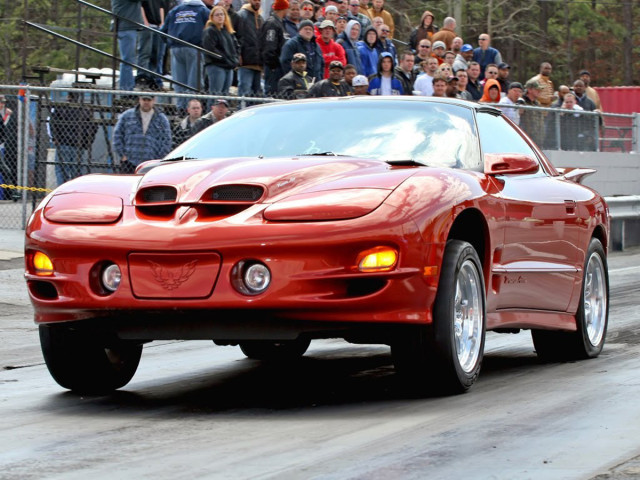
The WS6 package (and the SS option on the Camaro) was worth another 15 or so horsepower beyond the regular V8 cars
As everyone knows, the sky’s the limit on building either a Corvette or a fourth gen, so there’s not really a need to get into that, though we will say this – given the age of these cars now, the used aftermarket parts supply for these things is ridiculous. Owners are always improving their cars, thus selling off their used stuff. So check the forums and eBay for those of you who are very budget-minded, because the deals are out there.
The ’98 through ’02 LS1 F-cars can be found for a decent price just about anywhere. You can get a ’98 Z28, Formula, or Trans Am, for as little as $5k, but if you want the latest and greatest, they can get as high as $20,000 for a Collector’s Edition WS6, or an Anniversary Edition Camaro SS. Any higher than that, and you’ll just be dealing with someone who saw the last F-cars as nothing more than an investment opportunity, so shop around!
Silverado SS / Chevy SSR – 2003-2007
After 2002, GM temporarily tried filling the gap left by the dead F-body twins with a pair of “performance” pickup trucks for 2003; The Silverado SS and the SSR.
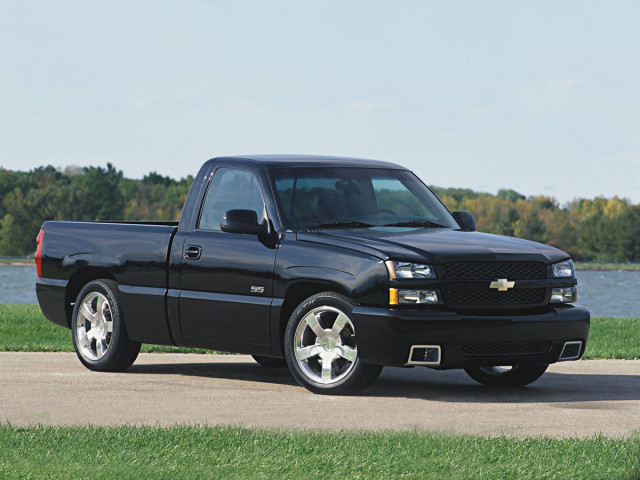
Overshadowed by the Ram SRT-10 and F-150 Lightning, the Silverado SS is still something of a sleeper
The first, being the more practical and realistic of the two, was basically a full-size, extended cab Silverado 1500 with AWD, a performance suspension and exhaust system, 20-inch wheels, “SS” badges, and the 345hp LQ9 6.0-liter from the Cadillac Escalade. It looked cool, and came loaded with creature comforts including leather, power everything, and a towing capacity of 7,500 pounds, courtesy of its Z82 heavy-duty towing package. It also came equipped with the 4L85E transmission and 4.10 gears.
On paper, it sounded like a great offering for those who wanted a badass, daily driven pickup that hauled the race car to the track on the weekends. But, if you wanted this to be your race car, well then you had two huge hurdles to counter; the weight, and the naturally-aspirated 6-liter engine. Since the truck was 5,298 pounds, it was underpowered compared to its rivals: the supercharged, 385hp SVT Lightning, and the 500hp SRT10 Ram. Both of those trucks were 13-second performers, while the Silverado was in the high 14’s. Although by 2005 you could get a RWD version of the same truck for less cash and less weight, the damage had already been done, and the performance still wasn’t as good as its rivals.
For 2006 and 2007, you were able to get a RWD-only “Intimidator” version with Dale Sr.’s likeness attached to it, which also included an even further-improved suspension, though straight-line speed hadn’t changed.
But don’t let this truck’s semi-lackluster performance get you down, as there is a whole truckload (pun intended) of available modifications you can do to this thing. we’d like to see someone throw a set of LS3 heads and a Maggie on one of these!
Prices of the Super Sport Silverado are still holding strong, as dealers are still asking mid-$20s for the earlier versions, and up to $30k for an ’06 or ’07.
The other performance truck GM released during the 2003 model year was a retro-bodied, hardtop convertible called the SSR (Super Sport Roadster) that shared its platform with the TrailBlazer. For the first two model years, it was only available with the 300hp, 5.3-liter LM7 and a 4L60E transmission.

The SSR was an odd mix of truck and hardtop convertible, and never sold in the numbers GM had hoped it would
Performance was less-than-stellar with a 0 to 60 time of 7.7 seconds, and a 1/4-mile time of 15.7 seconds, resulting in poor sales. Of course, with performance like that, combined with the lack of any real usability (the roof folded into the bed), and a sticker price of $42k in 2003 money, what would you expect?
The General had to react, and fast! They answered the call in 2005, with a brand new 6-liter LS2. Borrowed from the new C6 and the GTO, the LS2 developed 390hp in the SSR, giving the retro truck the performance it should have had in the first place.
Performance improved dramatically, and for the first time it was available with the T-56 manual transmission; the revitalized SSR’s were now capable of pulling 1/4-mile times in the high 13’s. Though this helped improve sales and enthusiasm for the truck, it still wasn’t enough. The year 2006 turned out to be the SSR’s swan song, and as a send off, the automatic version (4L65E) picked up 5hp while the manual gained 10hp, for a full 400. The last SSR to roll off of the line received a two-tone black and silver paint scheme.
Depending on what you want and need from your late-model GM vehicle, the SSR could work for you if you’re single without any children, or if you’re an empty-nester looking for a reliable weekend cruiser that’s a little bit different. Though not hugely popular now, the SSR will become a sought-out vehicle in the years to come due to its relative rarity.
Anybody can put an ’03 or ’04 SSR in their driveway for under $20k, while the higher-powered ’05 and ’06 models still command prices in the mid-$20’s.
Pontiac GTO – 2004-2006 and First-Generation Cadillac CTS-V – 2004-2007
Riding the tails of the Silverado SS and SSR of 2003, GM released not one, but two new RWD performance vehicles for 2004; the Pontiac GTO, and the Cadillac CTS-V.
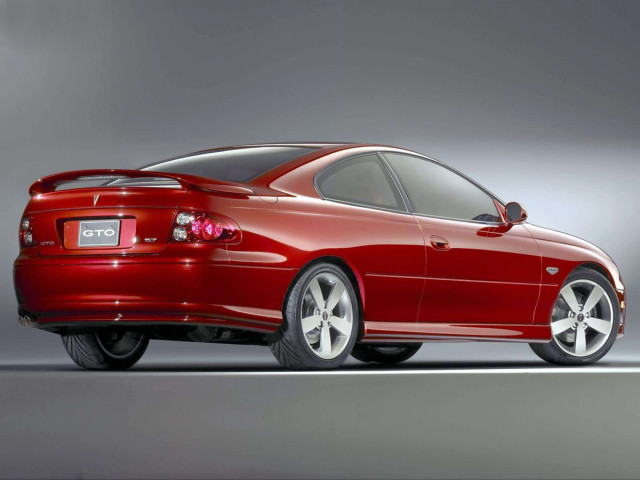
Some blamed the GTO’s lack of sales success on its bland styling, but there was no other large domestic coupe that could touch its performance potential
The new GTO, being the brainchild of newly-hired GM chairman Bob Lutz, was essentially a reengineered Australian Holden Monaro coupe. Many changes were made to the Monaro to prepare it for U.S. duty – the most obvious was the conversion from right to left-hand drive, and the relocation of the fuel tank from under the rear of the car to inside of the trunk to meet the strict U.S. crash safety standards.
It arrived on our shores with a 350hp LS1 borrowed from the Corvette, a natural engine for this car, considering it was also installed in its Holden counterpart as well.
Though the performance was impressive then, and still is very acceptable today, the amount of enthusiasm the car received was less than what the General was hoping for. It’s a shame too, because these were, and still are great cars. As far as performance was concerned, 0 to 60 times were in the low 5-second range, and the reborn GTO conquered the 1/4-mile in the mid 13-second range.
Behind the tried and true LS1 sat either the T-56 manual, or the 4L60E auto transmission, complimented by a set of 3.46 gears in either application. For the following two model years, the GTO would get a boost in power and torque in the form of the new LS2 that was borrowed from the then-new C6 Corvette.
Performance improved dramatically, resulting in elapsed times in the low 13’s, and a 0 to 60 time of 4.6 seconds. Brakes were improved, and the 18-inch wheels from the 2004 show car finally became available . There was also an optional Sport Appearance Package to help the new-for-2005 hood scoops give the car a more aggressive look.
The weak link in the GTO’s powertrain is the independent rear suspension, which is great if you’re only interested in taking corners, but bad if you’re a weekend warrior at your local drag strip. Prone to severe wheel hop and axle breakage, several companies do offer a cure for this issue.
All GTOs came in the form of a two-door sports coupe, and while it wasn’t even available with a sunroof, it did come available in a wide array of different color combinations.
Originally stickered in the mid-$30k price range, the GTO’s can be had for a fraction of what they sold for new. While pristine, low-mileage examples of the 2006 models tend to be in the low $20s, a first-year 2004 can be had for as little as $8000 – with acceptable mileage and excellent condition to boot!
For the first time ever, Cadillac threw their hat into the performance car market with the introduction of the CTS-V for 2004. Based off of the all-new CTS for 2003, the V-version took things to another level. The difference from the entry-level version to the extreme V-series was like night and day.

While the current-gen CTS-V is not exactly bargain-priced on the used market, first-gen naturally aspirated Caddies have all the same chassis and styling appeal
For a kickoff, it received a 5.7-liter, 400hp LS6, borrowed from the Z06 Corvette, and a mandatory T-56 transmission. It had a 3.73 gear set installed in its independent rear suspension, and four-piston Brembo calipers with 14-inch rotors on all four corners. Rolling stock came in the form of a set of 18-inch 6-lug, 6-spoke wheels wrapped in sticky Goodyear Eagle F1 rubber.
All “Vees” came fully-equipped with a leather/suede interior, remote keyless entry, XM satellite radio, OnStar, GPS, DVD, 6-disc CD changer, heated/power seats, a tire pressure monitoring system, traction control, active stability system, and even a “g-meter.” A moonroof was available as an optional extra, but by 2006, it became standard equipment as well. Would you expect anything less from a Cadillac?
Another change for 2006 came in the form of the new 6-liter LS2 power plant, borrowed from the standard Corvette. Though the power output remained identical to the LS6 at 400hp/395 lb-ft, the torque came in a bit sooner at 4,400 rpm, versus 4,800 rpm with the old LS6. Performance remained very similar, with 1/4-mile times in the very low 13’s, and a 0 to 60 time of 4.6 seconds.
Another change in 2006 was an optional set of all-season Goodyear Eagle RSA’s. Though the tread life lasted longer than the F1’s, the performance was sacrificed, as elapsed times worsened as much as a 1/2-second, the braking distance was substantially increased, and the cornering wasn’t as good. So when you’re out shopping, take a look at which tires are on it, and take into consideration what your goals are for your “new” CTS-V will be; a daily driver or a weekend fun toy.
A few trouble areas to look out for include a whine coming from the rearend on cars that were beat, along with broken motor mounts, The mounts are liquid filled, as part of GM’s effort to keep the car “Cadillac soft”. The clutch has a soft feel as well, and though this was a feature and not a fault, it isn’t ideal for the “wheel man” in all of us. The rear axles are weak in the ’04 and ’05 cars, only to be improved for 2006, but there is still a case of severe wheel hop in this generation. These cars weren’t designed to be drag strip warriors, intended more for competing against BMW’s and ‘Benz’s in the corners. So consider this if you are looking for your next drag car to be a Cadillac.

Add a little nitrous and a first-gen CTS-V will deliver performance similar to the current 556hp LSA version at a fraction of the price
Though the 556hp LSA of the new second-generation CTS-V has overshadowed the performance of the first-generation car, this doesn’t mean that these don’t make an excellent foundation upon which to build.
The chassis and suspension is superb, and much like its younger brother, they were dialed in at Germany’s Nurburgring test track. Available engine mods are similar to those in any other LS car, and a Roots-style blower will fit under the hood with ease as well.
One can pick up an ’04 CTS-V for as little as $14k, but if you desire to pick up the latest in the original body style, be prepared to pay as much as $30k. Still, for a car that retailed for $52k just a few years ago, that’s still a bit of a bargain.
That will do it for Part I of our Ultimate Guide to Cheap LS Muscle – catch the conclusion in Part II where we take a look at some LS-powered vehicles you might not have considered!



